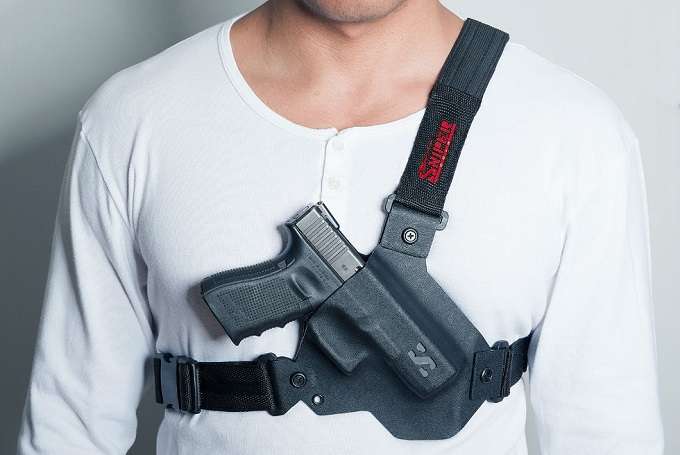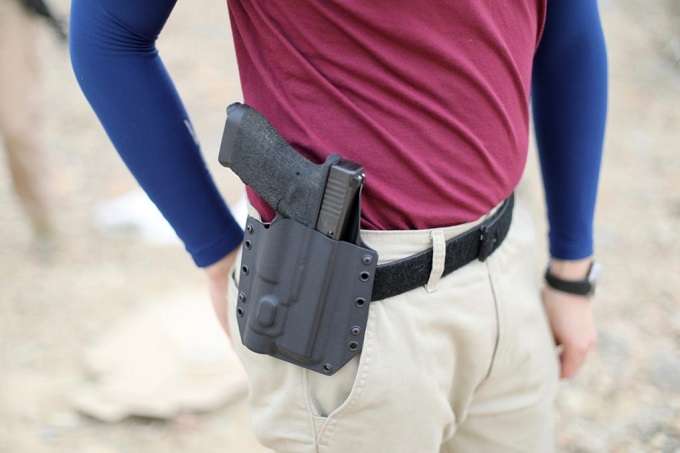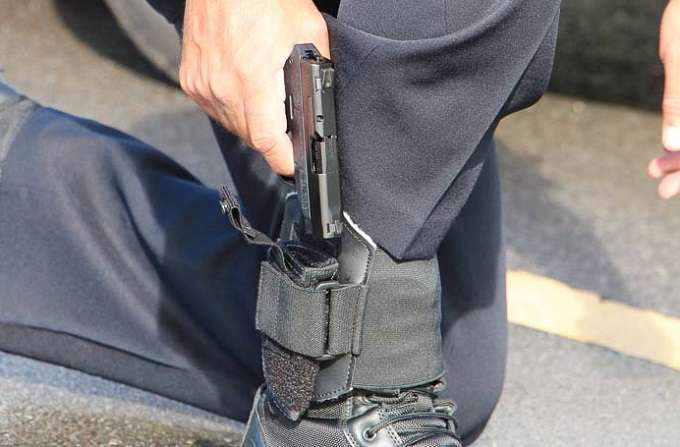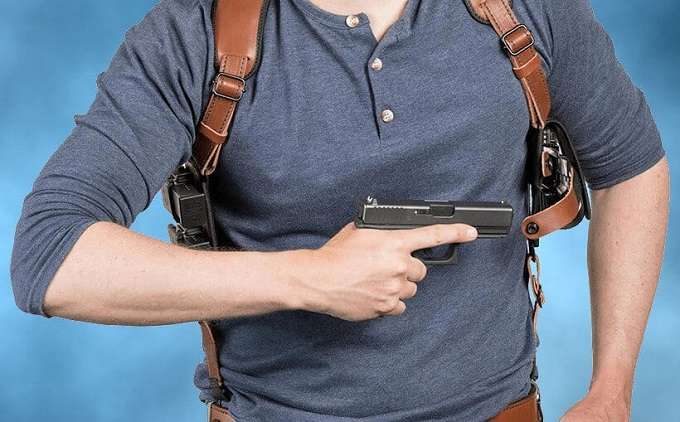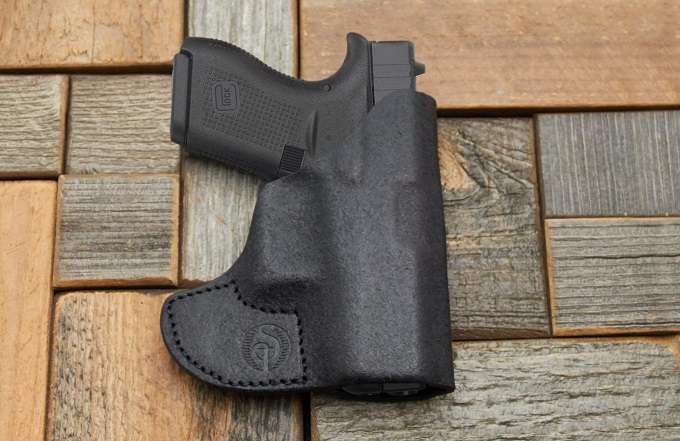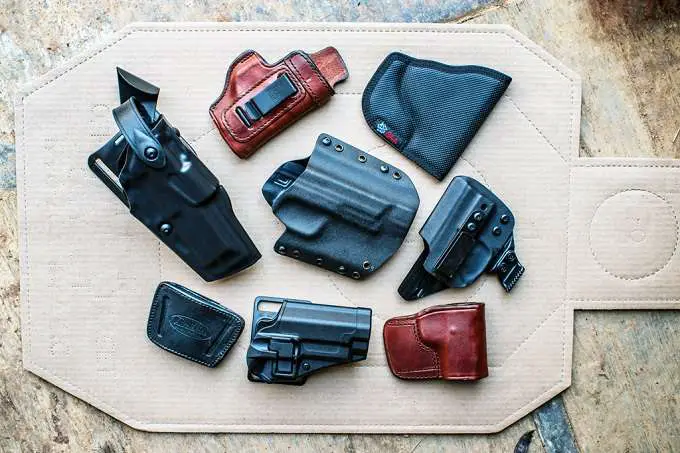var _ckyConfig = {"_ipData":[],"_assetsURL":"https:\/\/reloadyourgear.com\/wp-content\/plugins\/cookie-law-info\/lite\/frontend\/images\/","_publicURL":"https:\/\/reloadyourgear.com","_expiry":"365","_categories":[{"name":"Necessary","slug":"necessary","isNecessary":true,"ccpaDoNotSell":true,"cookies":[],"active":true,"defaultConsent":{"gdpr":true,"ccpa":true}},{"name":"Functional","slug":"functional","isNecessary":false,"ccpaDoNotSell":true,"cookies":[],"active":true,"defaultConsent":{"gdpr":false,"ccpa":false}},{"name":"Analytics","slug":"analytics","isNecessary":false,"ccpaDoNotSell":true,"cookies":[],"active":true,"defaultConsent":{"gdpr":false,"ccpa":false}},{"name":"Performance","slug":"performance","isNecessary":false,"ccpaDoNotSell":true,"cookies":[],"active":true,"defaultConsent":{"gdpr":false,"ccpa":false}},{"name":"Advertisement","slug":"advertisement","isNecessary":false,"ccpaDoNotSell":true,"cookies":[],"active":true,"defaultConsent":{"gdpr":false,"ccpa":false}}],"_activeLaw":"gdpr","_rootDomain":"","_block":"1","_showBanner":"1","_bannerConfig":{"settings":{"type":"box","preferenceCenterType":"popup","position":"bottom-left","applicableLaw":"gdpr"},"behaviours":{"reloadBannerOnAccept":false,"loadAnalyticsByDefault":false,"animations":{"onLoad":"animate","onHide":"sticky"}},"config":{"revisitConsent":{"status":true,"tag":"revisit-consent","position":"bottom-left","meta":{"url":"#"},"styles":{"background-color":"#0056A7"},"elements":{"title":{"type":"text","tag":"revisit-consent-title","status":true,"styles":{"color":"#0056a7"}}}},"preferenceCenter":{"toggle":{"status":true,"tag":"detail-category-toggle","type":"toggle","states":{"active":{"styles":{"background-color":"#1863DC"}},"inactive":{"styles":{"background-color":"#D0D5D2"}}}}},"categoryPreview":{"status":false,"toggle":{"status":true,"tag":"detail-category-preview-toggle","type":"toggle","states":{"active":{"styles":{"background-color":"#1863DC"}},"inactive":{"styles":{"background-color":"#D0D5D2"}}}}},"videoPlaceholder":{"status":true,"styles":{"background-color":"#000000","border-color":"#000000","color":"#ffffff"}},"readMore":{"status":false,"tag":"readmore-button","type":"link","meta":{"noFollow":true,"newTab":true},"styles":{"color":"#1863DC","background-color":"transparent","border-color":"transparent"}},"auditTable":{"status":true},"optOption":{"status":true,"toggle":{"status":true,"tag":"optout-option-toggle","type":"toggle","states":{"active":{"styles":{"background-color":"#1863dc"}},"inactive":{"styles":{"background-color":"#FFFFFF"}}}}}}},"_version":"3.2.0","_logConsent":"1","_tags":[{"tag":"accept-button","styles":{"color":"#FFFFFF","background-color":"#1863DC","border-color":"#1863DC"}},{"tag":"reject-button","styles":{"color":"#1863DC","background-color":"transparent","border-color":"#1863DC"}},{"tag":"settings-button","styles":{"color":"#1863DC","background-color":"transparent","border-color":"#1863DC"}},{"tag":"readmore-button","styles":{"color":"#1863DC","background-color":"transparent","border-color":"transparent"}},{"tag":"donotsell-button","styles":{"color":"#1863DC","background-color":"transparent","border-color":"transparent"}},{"tag":"accept-button","styles":{"color":"#FFFFFF","background-color":"#1863DC","border-color":"#1863DC"}},{"tag":"revisit-consent","styles":{"background-color":"#0056A7"}}],"_shortCodes":[{"key":"cky_readmore","content":"<a href=\"#\" class=\"cky-policy\" aria-label=\"Cookie Policy\" target=\"_blank\" rel=\"noopener\" data-cky-tag=\"readmore-button\">Cookie Policy<\/a>","tag":"readmore-button","status":false,"attributes":{"rel":"nofollow","target":"_blank"}},{"key":"cky_show_desc","content":"<button class=\"cky-show-desc-btn\" data-cky-tag=\"show-desc-button\" aria-label=\"Show more\">Show more<\/button>","tag":"show-desc-button","status":true,"attributes":[]},{"key":"cky_hide_desc","content":"<button class=\"cky-show-desc-btn\" data-cky-tag=\"hide-desc-button\" aria-label=\"Show less\">Show less<\/button>","tag":"hide-desc-button","status":true,"attributes":[]},{"key":"cky_category_toggle_label","content":"[cky_{{status}}_category_label] [cky_preference_{{category_slug}}_title]","tag":"","status":true,"attributes":[]},{"key":"cky_enable_category_label","content":"Enable","tag":"","status":true,"attributes":[]},{"key":"cky_disable_category_label","content":"Disable","tag":"","status":true,"attributes":[]},{"key":"cky_video_placeholder","content":"<div class=\"video-placeholder-normal\" data-cky-tag=\"video-placeholder\" id=\"[UNIQUEID]\"><p class=\"video-placeholder-text-normal\" data-cky-tag=\"placeholder-title\">Please accept cookies to access this content<\/p><\/div>","tag":"","status":true,"attributes":[]},{"key":"cky_enable_optout_label","content":"Enable","tag":"","status":true,"attributes":[]},{"key":"cky_disable_optout_label","content":"Disable","tag":"","status":true,"attributes":[]},{"key":"cky_optout_toggle_label","content":"[cky_{{status}}_optout_label] [cky_optout_option_title]","tag":"","status":true,"attributes":[]},{"key":"cky_optout_option_title","content":"Do Not Sell or Share My Personal Information","tag":"","status":true,"attributes":[]},{"key":"cky_optout_close_label","content":"Close","tag":"","status":true,"attributes":[]}],"_rtl":"","_providersToBlock":[]};
var _ckyStyles = {"css":".cky-overlay{background: #000000; opacity: 0.4; position: fixed; top: 0; left: 0; width: 100%; height: 100%; z-index: 99999999;}.cky-hide{display: none;}.cky-btn-revisit-wrapper{display: flex; align-items: center; justify-content: center; background: #0056a7; width: 45px; height: 45px; border-radius: 50%; position: fixed; z-index: 999999; cursor: pointer;}.cky-revisit-bottom-left{bottom: 15px; left: 15px;}.cky-revisit-bottom-right{bottom: 15px; right: 15px;}.cky-btn-revisit-wrapper .cky-btn-revisit{display: flex; align-items: center; justify-content: center; background: none; border: none; cursor: pointer; position: relative; margin: 0; padding: 0;}.cky-btn-revisit-wrapper .cky-btn-revisit img{max-width: fit-content; margin: 0; height: 30px; width: 30px;}.cky-revisit-bottom-left:hover::before{content: attr(data-tooltip); position: absolute; background: #4e4b66; color: #ffffff; left: calc(100% + 7px); font-size: 12px; line-height: 16px; width: max-content; padding: 4px 8px; border-radius: 4px;}.cky-revisit-bottom-left:hover::after{position: absolute; content: \"\"; border: 5px solid transparent; left: calc(100% + 2px); border-left-width: 0; border-right-color: #4e4b66;}.cky-revisit-bottom-right:hover::before{content: attr(data-tooltip); position: absolute; background: #4e4b66; color: #ffffff; right: calc(100% + 7px); font-size: 12px; line-height: 16px; width: max-content; padding: 4px 8px; border-radius: 4px;}.cky-revisit-bottom-right:hover::after{position: absolute; content: \"\"; border: 5px solid transparent; right: calc(100% + 2px); border-right-width: 0; border-left-color: #4e4b66;}.cky-revisit-hide{display: none;}.cky-consent-container{position: fixed; width: 440px; box-sizing: border-box; z-index: 9999999; border-radius: 6px;}.cky-consent-container .cky-consent-bar{background: #ffffff; border: 1px solid; padding: 20px 26px; box-shadow: 0 -1px 10px 0 #acabab4d; border-radius: 6px;}.cky-box-bottom-left{bottom: 40px; left: 40px;}.cky-box-bottom-right{bottom: 40px; right: 40px;}.cky-box-top-left{top: 40px; left: 40px;}.cky-box-top-right{top: 40px; right: 40px;}.cky-custom-brand-logo-wrapper .cky-custom-brand-logo{width: 100px; height: auto; margin: 0 0 12px 0;}.cky-notice .cky-title{color: #212121; font-weight: 700; font-size: 18px; line-height: 24px; margin: 0 0 12px 0;}.cky-notice-des *,.cky-preference-content-wrapper *,.cky-accordion-header-des *,.cky-gpc-wrapper .cky-gpc-desc *{font-size: 14px;}.cky-notice-des{color: #212121; font-size: 14px; line-height: 24px; font-weight: 400;}.cky-notice-des img{height: 25px; width: 25px;}.cky-consent-bar .cky-notice-des p,.cky-gpc-wrapper .cky-gpc-desc p,.cky-preference-body-wrapper .cky-preference-content-wrapper p,.cky-accordion-header-wrapper .cky-accordion-header-des p,.cky-cookie-des-table li div:last-child p{color: inherit; margin-top: 0; overflow-wrap: break-word;}.cky-notice-des P:last-child,.cky-preference-content-wrapper p:last-child,.cky-cookie-des-table li div:last-child p:last-child,.cky-gpc-wrapper .cky-gpc-desc p:last-child{margin-bottom: 0;}.cky-notice-des a.cky-policy,.cky-notice-des button.cky-policy{font-size: 14px; color: #1863dc; white-space: nowrap; cursor: pointer; background: transparent; border: 1px solid; text-decoration: underline;}.cky-notice-des button.cky-policy{padding: 0;}.cky-notice-des a.cky-policy:focus-visible,.cky-notice-des button.cky-policy:focus-visible,.cky-preference-content-wrapper .cky-show-desc-btn:focus-visible,.cky-accordion-header .cky-accordion-btn:focus-visible,.cky-preference-header .cky-btn-close:focus-visible,.cky-switch input[type=\"checkbox\"]:focus-visible,.cky-footer-wrapper a:focus-visible,.cky-btn:focus-visible{outline: 2px solid #1863dc; outline-offset: 2px;}.cky-btn:focus:not(:focus-visible),.cky-accordion-header .cky-accordion-btn:focus:not(:focus-visible),.cky-preference-content-wrapper .cky-show-desc-btn:focus:not(:focus-visible),.cky-btn-revisit-wrapper .cky-btn-revisit:focus:not(:focus-visible),.cky-preference-header .cky-btn-close:focus:not(:focus-visible),.cky-consent-bar .cky-banner-btn-close:focus:not(:focus-visible){outline: 0;}button.cky-show-desc-btn:not(:hover):not(:active){color: #1863dc; background: transparent;}button.cky-accordion-btn:not(:hover):not(:active),button.cky-banner-btn-close:not(:hover):not(:active),button.cky-btn-revisit:not(:hover):not(:active),button.cky-btn-close:not(:hover):not(:active){background: transparent;}.cky-consent-bar button:hover,.cky-modal.cky-modal-open button:hover,.cky-consent-bar button:focus,.cky-modal.cky-modal-open button:focus{text-decoration: none;}.cky-notice-btn-wrapper{display: flex; justify-content: flex-start; align-items: center; flex-wrap: wrap; margin-top: 16px;}.cky-notice-btn-wrapper .cky-btn{text-shadow: none; box-shadow: none;}.cky-btn{flex: auto; max-width: 100%; font-size: 14px; font-family: inherit; line-height: 24px; padding: 8px; font-weight: 500; margin: 0 8px 0 0; border-radius: 2px; cursor: pointer; text-align: center; text-transform: none; min-height: 0;}.cky-btn:hover{opacity: 0.8;}.cky-btn-customize{color: #1863dc; background: transparent; border: 2px solid #1863dc;}.cky-btn-reject{color: #1863dc; background: transparent; border: 2px solid #1863dc;}.cky-btn-accept{background: #1863dc; color: #ffffff; border: 2px solid #1863dc;}.cky-btn:last-child{margin-right: 0;}@media (max-width: 576px){.cky-box-bottom-left{bottom: 0; left: 0;}.cky-box-bottom-right{bottom: 0; right: 0;}.cky-box-top-left{top: 0; left: 0;}.cky-box-top-right{top: 0; right: 0;}}@media (max-width: 440px){.cky-box-bottom-left, .cky-box-bottom-right, .cky-box-top-left, .cky-box-top-right{width: 100%; max-width: 100%;}.cky-consent-container .cky-consent-bar{padding: 20px 0;}.cky-custom-brand-logo-wrapper, .cky-notice .cky-title, .cky-notice-des, .cky-notice-btn-wrapper{padding: 0 24px;}.cky-notice-des{max-height: 40vh; overflow-y: scroll;}.cky-notice-btn-wrapper{flex-direction: column; margin-top: 0;}.cky-btn{width: 100%; margin: 10px 0 0 0;}.cky-notice-btn-wrapper .cky-btn-customize{order: 2;}.cky-notice-btn-wrapper .cky-btn-reject{order: 3;}.cky-notice-btn-wrapper .cky-btn-accept{order: 1; margin-top: 16px;}}@media (max-width: 352px){.cky-notice .cky-title{font-size: 16px;}.cky-notice-des *{font-size: 12px;}.cky-notice-des, .cky-btn{font-size: 12px;}}.cky-modal.cky-modal-open{display: flex; visibility: visible; -webkit-transform: translate(-50%, -50%); -moz-transform: translate(-50%, -50%); -ms-transform: translate(-50%, -50%); -o-transform: translate(-50%, -50%); transform: translate(-50%, -50%); top: 50%; left: 50%; transition: all 1s ease;}.cky-modal{box-shadow: 0 32px 68px rgba(0, 0, 0, 0.3); margin: 0 auto; position: fixed; max-width: 100%; background: #ffffff; top: 50%; box-sizing: border-box; border-radius: 6px; z-index: 999999999; color: #212121; -webkit-transform: translate(-50%, 100%); -moz-transform: translate(-50%, 100%); -ms-transform: translate(-50%, 100%); -o-transform: translate(-50%, 100%); transform: translate(-50%, 100%); visibility: hidden; transition: all 0s ease;}.cky-preference-center{max-height: 79vh; overflow: hidden; width: 845px; overflow: hidden; flex: 1 1 0; display: flex; flex-direction: column; border-radius: 6px;}.cky-preference-header{display: flex; align-items: center; justify-content: space-between; padding: 22px 24px; border-bottom: 1px solid;}.cky-preference-header .cky-preference-title{font-size: 18px; font-weight: 700; line-height: 24px;}.cky-preference-header .cky-btn-close{margin: 0; cursor: pointer; vertical-align: middle; padding: 0; background: none; border: none; width: auto; height: auto; min-height: 0; line-height: 0; text-shadow: none; box-shadow: none;}.cky-preference-header .cky-btn-close img{margin: 0; height: 10px; width: 10px;}.cky-preference-body-wrapper{padding: 0 24px; flex: 1; overflow: auto; box-sizing: border-box;}.cky-preference-content-wrapper,.cky-gpc-wrapper .cky-gpc-desc{font-size: 14px; line-height: 24px; font-weight: 400; padding: 12px 0;}.cky-preference-content-wrapper{border-bottom: 1px solid;}.cky-preference-content-wrapper img{height: 25px; width: 25px;}.cky-preference-content-wrapper .cky-show-desc-btn{font-size: 14px; font-family: inherit; color: #1863dc; text-decoration: none; line-height: 24px; padding: 0; margin: 0; white-space: nowrap; cursor: pointer; background: transparent; border-color: transparent; text-transform: none; min-height: 0; text-shadow: none; box-shadow: none;}.cky-accordion-wrapper{margin-bottom: 10px;}.cky-accordion{border-bottom: 1px solid;}.cky-accordion:last-child{border-bottom: none;}.cky-accordion .cky-accordion-item{display: flex; margin-top: 10px;}.cky-accordion .cky-accordion-body{display: none;}.cky-accordion.cky-accordion-active .cky-accordion-body{display: block; padding: 0 22px; margin-bottom: 16px;}.cky-accordion-header-wrapper{cursor: pointer; width: 100%;}.cky-accordion-item .cky-accordion-header{display: flex; justify-content: space-between; align-items: center;}.cky-accordion-header .cky-accordion-btn{font-size: 16px; font-family: inherit; color: #212121; line-height: 24px; background: none; border: none; font-weight: 700; padding: 0; margin: 0; cursor: pointer; text-transform: none; min-height: 0; text-shadow: none; box-shadow: none;}.cky-accordion-header .cky-always-active{color: #008000; font-weight: 600; line-height: 24px; font-size: 14px;}.cky-accordion-header-des{font-size: 14px; line-height: 24px; margin: 10px 0 16px 0;}.cky-accordion-chevron{margin-right: 22px; position: relative; cursor: pointer;}.cky-accordion-chevron-hide{display: none;}.cky-accordion .cky-accordion-chevron i::before{content: \"\"; position: absolute; border-right: 1.4px solid; border-bottom: 1.4px solid; border-color: inherit; height: 6px; width: 6px; -webkit-transform: rotate(-45deg); -moz-transform: rotate(-45deg); -ms-transform: rotate(-45deg); -o-transform: rotate(-45deg); transform: rotate(-45deg); transition: all 0.2s ease-in-out; top: 8px;}.cky-accordion.cky-accordion-active .cky-accordion-chevron i::before{-webkit-transform: rotate(45deg); -moz-transform: rotate(45deg); -ms-transform: rotate(45deg); -o-transform: rotate(45deg); transform: rotate(45deg);}.cky-audit-table{background: #f4f4f4; border-radius: 6px;}.cky-audit-table .cky-empty-cookies-text{color: inherit; font-size: 12px; line-height: 24px; margin: 0; padding: 10px;}.cky-audit-table .cky-cookie-des-table{font-size: 12px; line-height: 24px; font-weight: normal; padding: 15px 10px; border-bottom: 1px solid; border-bottom-color: inherit; margin: 0;}.cky-audit-table .cky-cookie-des-table:last-child{border-bottom: none;}.cky-audit-table .cky-cookie-des-table li{list-style-type: none; display: flex; padding: 3px 0;}.cky-audit-table .cky-cookie-des-table li:first-child{padding-top: 0;}.cky-cookie-des-table li div:first-child{width: 100px; font-weight: 600; word-break: break-word; word-wrap: break-word;}.cky-cookie-des-table li div:last-child{flex: 1; word-break: break-word; word-wrap: break-word; margin-left: 8px;}.cky-footer-shadow{display: block; width: 100%; height: 40px; background: linear-gradient(180deg, rgba(255, 255, 255, 0) 0%, #ffffff 100%); position: absolute; bottom: calc(100% - 1px);}.cky-footer-wrapper{position: relative;}.cky-prefrence-btn-wrapper{display: flex; flex-wrap: wrap; align-items: center; justify-content: center; padding: 22px 24px; border-top: 1px solid;}.cky-prefrence-btn-wrapper .cky-btn{flex: auto; max-width: 100%; text-shadow: none; box-shadow: none;}.cky-btn-preferences{color: #1863dc; background: transparent; border: 2px solid #1863dc;}.cky-preference-header,.cky-preference-body-wrapper,.cky-preference-content-wrapper,.cky-accordion-wrapper,.cky-accordion,.cky-accordion-wrapper,.cky-footer-wrapper,.cky-prefrence-btn-wrapper{border-color: inherit;}@media (max-width: 845px){.cky-modal{max-width: calc(100% - 16px);}}@media (max-width: 576px){.cky-modal{max-width: 100%;}.cky-preference-center{max-height: 100vh;}.cky-prefrence-btn-wrapper{flex-direction: column;}.cky-accordion.cky-accordion-active .cky-accordion-body{padding-right: 0;}.cky-prefrence-btn-wrapper .cky-btn{width: 100%; margin: 10px 0 0 0;}.cky-prefrence-btn-wrapper .cky-btn-reject{order: 3;}.cky-prefrence-btn-wrapper .cky-btn-accept{order: 1; margin-top: 0;}.cky-prefrence-btn-wrapper .cky-btn-preferences{order: 2;}}@media (max-width: 425px){.cky-accordion-chevron{margin-right: 15px;}.cky-notice-btn-wrapper{margin-top: 0;}.cky-accordion.cky-accordion-active .cky-accordion-body{padding: 0 15px;}}@media (max-width: 352px){.cky-preference-header .cky-preference-title{font-size: 16px;}.cky-preference-header{padding: 16px 24px;}.cky-preference-content-wrapper *, .cky-accordion-header-des *{font-size: 12px;}.cky-preference-content-wrapper, .cky-preference-content-wrapper .cky-show-more, .cky-accordion-header .cky-always-active, .cky-accordion-header-des, .cky-preference-content-wrapper .cky-show-desc-btn, .cky-notice-des a.cky-policy{font-size: 12px;}.cky-accordion-header .cky-accordion-btn{font-size: 14px;}}.cky-switch{display: flex;}.cky-switch input[type=\"checkbox\"]{position: relative; width: 44px; height: 24px; margin: 0; background: #d0d5d2; -webkit-appearance: none; border-radius: 50px; cursor: pointer; outline: 0; border: none; top: 0;}.cky-switch input[type=\"checkbox\"]:checked{background: #1863dc;}.cky-switch input[type=\"checkbox\"]:before{position: absolute; content: \"\"; height: 20px; width: 20px; left: 2px; bottom: 2px; border-radius: 50%; background-color: white; -webkit-transition: 0.4s; transition: 0.4s; margin: 0;}.cky-switch input[type=\"checkbox\"]:after{display: none;}.cky-switch input[type=\"checkbox\"]:checked:before{-webkit-transform: translateX(20px); -ms-transform: translateX(20px); transform: translateX(20px);}@media (max-width: 425px){.cky-switch input[type=\"checkbox\"]{width: 38px; height: 21px;}.cky-switch input[type=\"checkbox\"]:before{height: 17px; width: 17px;}.cky-switch input[type=\"checkbox\"]:checked:before{-webkit-transform: translateX(17px); -ms-transform: translateX(17px); transform: translateX(17px);}}.cky-consent-bar .cky-banner-btn-close{position: absolute; right: 9px; top: 5px; background: none; border: none; cursor: pointer; padding: 0; margin: 0; min-height: 0; line-height: 0; height: auto; width: auto; text-shadow: none; box-shadow: none;}.cky-consent-bar .cky-banner-btn-close img{height: 9px; width: 9px; margin: 0;}.cky-notice-group{font-size: 14px; line-height: 24px; font-weight: 400; color: #212121;}.cky-notice-btn-wrapper .cky-btn-do-not-sell{font-size: 14px; line-height: 24px; padding: 6px 0; margin: 0; font-weight: 500; background: none; border-radius: 2px; border: none; cursor: pointer; text-align: left; color: #1863dc; background: transparent; border-color: transparent; box-shadow: none; text-shadow: none;}.cky-consent-bar .cky-banner-btn-close:focus-visible,.cky-notice-btn-wrapper .cky-btn-do-not-sell:focus-visible,.cky-opt-out-btn-wrapper .cky-btn:focus-visible,.cky-opt-out-checkbox-wrapper input[type=\"checkbox\"].cky-opt-out-checkbox:focus-visible{outline: 2px solid #1863dc; outline-offset: 2px;}@media (max-width: 440px){.cky-consent-container{width: 100%;}}@media (max-width: 352px){.cky-notice-des a.cky-policy, .cky-notice-btn-wrapper .cky-btn-do-not-sell{font-size: 12px;}}.cky-opt-out-wrapper{padding: 12px 0;}.cky-opt-out-wrapper .cky-opt-out-checkbox-wrapper{display: flex; align-items: center;}.cky-opt-out-checkbox-wrapper .cky-opt-out-checkbox-label{font-size: 16px; font-weight: 700; line-height: 24px; margin: 0 0 0 12px; cursor: pointer;}.cky-opt-out-checkbox-wrapper input[type=\"checkbox\"].cky-opt-out-checkbox{background-color: #ffffff; border: 1px solid black; width: 20px; height: 18.5px; margin: 0; -webkit-appearance: none; position: relative; display: flex; align-items: center; justify-content: center; border-radius: 2px; cursor: pointer;}.cky-opt-out-checkbox-wrapper input[type=\"checkbox\"].cky-opt-out-checkbox:checked{background-color: #1863dc; border: none;}.cky-opt-out-checkbox-wrapper input[type=\"checkbox\"].cky-opt-out-checkbox:checked::after{left: 6px; bottom: 4px; width: 7px; height: 13px; border: solid #ffffff; border-width: 0 3px 3px 0; border-radius: 2px; -webkit-transform: rotate(45deg); -ms-transform: rotate(45deg); transform: rotate(45deg); content: \"\"; position: absolute; box-sizing: border-box;}.cky-opt-out-checkbox-wrapper.cky-disabled .cky-opt-out-checkbox-label,.cky-opt-out-checkbox-wrapper.cky-disabled input[type=\"checkbox\"].cky-opt-out-checkbox{cursor: no-drop;}.cky-gpc-wrapper{margin: 0 0 0 32px;}.cky-footer-wrapper .cky-opt-out-btn-wrapper{display: flex; flex-wrap: wrap; align-items: center; justify-content: center; padding: 22px 24px;}.cky-opt-out-btn-wrapper .cky-btn{flex: auto; max-width: 100%; text-shadow: none; box-shadow: none;}.cky-opt-out-btn-wrapper .cky-btn-cancel{border: 1px solid #dedfe0; background: transparent; color: #858585;}.cky-opt-out-btn-wrapper .cky-btn-confirm{background: #1863dc; color: #ffffff; border: 1px solid #1863dc;}@media (max-width: 352px){.cky-opt-out-checkbox-wrapper .cky-opt-out-checkbox-label{font-size: 14px;}.cky-gpc-wrapper .cky-gpc-desc, .cky-gpc-wrapper .cky-gpc-desc *{font-size: 12px;}.cky-opt-out-checkbox-wrapper input[type=\"checkbox\"].cky-opt-out-checkbox{width: 16px; height: 16px;}.cky-opt-out-checkbox-wrapper input[type=\"checkbox\"].cky-opt-out-checkbox:checked::after{left: 5px; bottom: 4px; width: 3px; height: 9px;}.cky-gpc-wrapper{margin: 0 0 0 28px;}}.video-placeholder-youtube{background-size: 100% 100%; background-position: center; background-repeat: no-repeat; background-color: #b2b0b059; position: relative; display: flex; align-items: center; justify-content: center; max-width: 100%;}.video-placeholder-text-youtube{text-align: center; align-items: center; padding: 10px 16px; background-color: #000000cc; color: #ffffff; border: 1px solid; border-radius: 2px; cursor: pointer;}.video-placeholder-normal{background-image: url(\"\/wp-content\/plugins\/cookie-law-info\/lite\/frontend\/images\/placeholder.svg\"); background-size: 80px; background-position: center; background-repeat: no-repeat; background-color: #b2b0b059; position: relative; display: flex; align-items: flex-end; justify-content: center; max-width: 100%;}.video-placeholder-text-normal{align-items: center; padding: 10px 16px; text-align: center; border: 1px solid; border-radius: 2px; cursor: pointer;}.cky-rtl{direction: rtl; text-align: right;}.cky-rtl .cky-banner-btn-close{left: 9px; right: auto;}.cky-rtl .cky-notice-btn-wrapper .cky-btn:last-child{margin-right: 8px;}.cky-rtl .cky-notice-btn-wrapper .cky-btn:first-child{margin-right: 0;}.cky-rtl .cky-notice-btn-wrapper{margin-left: 0; margin-right: 15px;}.cky-rtl .cky-prefrence-btn-wrapper .cky-btn{margin-right: 8px;}.cky-rtl .cky-prefrence-btn-wrapper .cky-btn:first-child{margin-right: 0;}.cky-rtl .cky-accordion .cky-accordion-chevron i::before{border: none; border-left: 1.4px solid; border-top: 1.4px solid; left: 12px;}.cky-rtl .cky-accordion.cky-accordion-active .cky-accordion-chevron i::before{-webkit-transform: rotate(-135deg); -moz-transform: rotate(-135deg); -ms-transform: rotate(-135deg); -o-transform: rotate(-135deg); transform: rotate(-135deg);}@media (max-width: 768px){.cky-rtl .cky-notice-btn-wrapper{margin-right: 0;}}@media (max-width: 576px){.cky-rtl .cky-notice-btn-wrapper .cky-btn:last-child{margin-right: 0;}.cky-rtl .cky-prefrence-btn-wrapper .cky-btn{margin-right: 0;}.cky-rtl .cky-accordion.cky-accordion-active .cky-accordion-body{padding: 0 22px 0 0;}}@media (max-width: 425px){.cky-rtl .cky-accordion.cky-accordion-active .cky-accordion-body{padding: 0 15px 0 0;}}.cky-rtl .cky-opt-out-btn-wrapper .cky-btn{margin-right: 12px;}.cky-rtl .cky-opt-out-btn-wrapper .cky-btn:first-child{margin-right: 0;}.cky-rtl .cky-opt-out-checkbox-wrapper .cky-opt-out-checkbox-label{margin: 0 12px 0 0;}"};
https://reloadyourgear.com/wp-content/plugins/cookie-law-info/lite/frontend/js/script.min.js
var breeze_prefetch = {"local_url":"https:\/\/reloadyourgear.com","ignore_remote_prefetch":"1","ignore_list":["\/wp-admin\/"]};
https://reloadyourgear.com/wp-content/plugins/breeze/assets/js/js-front-end/breeze-prefetch-links.min.js
https://reloadyourgear.com/wp-includes/js/jquery/jquery.min.js
https://reloadyourgear.com/wp-includes/js/jquery/jquery-migrate.min.js
Skip to content
A holster is an important piece of gear as long you are licensed to carry a handgun.
Either for self-defense or if your job involves the use of handguns.
The best belly band holster serves as a sturdy storage sheath for your handgun which stands between your body and the gun.
Aside from knowing how to defend yourself , it is expedient you choose the right holster. But which are the best gun holsters?
A wrong choice of holster can be uncomfortable and make it difficult to retrieve your weapon in the face of danger which could affect your performance. Need a concealed carry holster ? You’ll likely get a different style than a hunting sidearm.
It is important to know that there are various types, forms, and shapes.
Each holster is unique from the other based on how they are used and where they are placed.
At times, the type of handgun you carry will also determine the type of holster you would go for.
Because of these factors and differences, it is important to know which holster is right for you and which rightly fits your needs.
Types Of Holsters
There are vast amounts of holsters in the market you can choose from. but you have to ensure you opt for the one that suits your needs.
The type of holster you purchase determines the level of comfort and convenience you enjoy as you go about your daily activities, though you are not restricted to a particular type, depending on the number of weapons you keep.
Holsters are also distinguished based on what they are used for and are identified by a unique feature that makes them suitable for such purposes.
In other words, a duty holster as used by an officer requires more retention than concealment, because they are expected to carry guns.
Some would rather go for concealment holsters especially for covert operations where they don’t want to be identified.
Furthermore, a holster for sports events has more retention than concealment thereby, they are built to allow its user to make a fast draw of the weapon when in front of a target.
Other types of holsters have found their way into the market these days based on the need for something different and unexpected.
Such holsters are usually referred to as exotic; this is because they are usually fit for places where guns are not expected to be used without causing a commotion.
They could be built-in purse holsters, attached to waist bags or (inner) thigh holsters.
Waist (Hip) Holsters
Waist holsters are usually attached to the waist/hip band of your pants.
They are the common holster and are usually of three types depending on how they are placed:
Inside the waist (IWB) holsters are usually held in place into the pants with its carrier easily tucked in. It is clipped on your belt for a firm and secure hold while moving about.
Outside the waist (OWB) holsters, on the other hand, are the most common and easy to use holster types. They are also held in place by mounting on belts and allows for easy retrieval of guns.
A belly band holster is worn by people who like comfort. These holsters consist of a large band that is usually flexible like neoprene for example. They will fit most handguns and you can store additional magazines or personal belongings.
Another type is the small of back concealed carry holster which is hardly noticeable, even under tight clothing.
Pros
They are easy to carry around
They offer concealment
Weapons are held securely and firmly in place
Provide easy access and retrieval of weapons when needed
Does not hinder free movement and operation
Cons
Could be uncomfortable at times
Some have abrasive edges and could leave scratch marks on a gun
It is a common place to look for a holster if it’s concealed
Ankle/Leg Holster
Leg holsters are usually strapped to the thigh and can be reached from any position, while ankle holsters are attached further down the leg.
These types are usually used for backup guns because they cannot be retrieved easily except at a certain angle or position.
Pros
Great for concealed carry
Used for backup guns
Good alternative in areas where clothing does not allow the use of waist holster
Easy to retrieve in sitting or bending position
Cons
Concealment could pose a big deal, especially in summer when you might need to dress less
They are usually heavy on the leg and restrict quick movement
Requires the raising of pant legs which could take a while
Does not fit with certain pants such as leggings
Cannot be retrieved in a hurry
Difficult to retrieve if you are dealing with back or knee pains
Shoulder Holster
This is a more vintage or old-fashioned way of keeping firearms.
It could be fixed vertically or horizontally across the shoulder or as a sling holster strapped across the chest.
Pros
Easily accessible
Easy to re-holster
Cons
Not concealed except you wear a jacket
Not suitable for summer when you will need to wear little
Pocket Holster
This is a good alternative to a waist holster.
The holster is built to fit conveniently inside the pocket without a revealing bulge. It is usually only suitable for smaller concealed carry guns and can be easily retrieved when needed.
Pros
Easy to retrieve
Convenient and comfortable
Easy to replace
Cons
It takes up the space for usual stuff like wallets and car keys
It is usually bulky
For women, these can be great to drop in a purse, but the best option is to pick up a reliable concealed carry purse so that your pistol is easy to access and hard to lose among your other belongings. Here’s a complete guide in choosing the best concealed carry purse .
If your build is a little above average, our article on the best holster for fat guys should help you find the right one!
Factors To Consider Before Choosing The Right Holster
Having understood the different types of holsters and which one is suitable for different purposes.
It is also important to consider the following factors that would guide you in choosing a concealed carry holster that’s perfect for you.
Type of gun : it determines the holster type you would go for. This is because the shape, form, and size of the holster have to allow the gun to fit in securely. It’s essential that you get compact pistols such as the Springfield Hellcat a snug-fitting holster. Check out our recommendations for the best hellcat holsters to know more. Material : mostly leather, but others could be molded plastics (Kydex) or nylon.Comfort and convenience : a good holster should allow you to move about conveniently without hindrance; and in cases where you have to wear it for a longer period of time while, it should give no sign of discomfort such as pinching or rubbing on the skin.Concealment: this is especially covert operations. People should not be aware that you carry a gun unless you tell. It should stay invisible.Position and accessibility: A good holster should be able to stay positioned at angles strategic for easy access and retrieval of a handgun.
Retention: this is the holster’s ability to hold the gun firmly and securely in place. The gun should not slide off its hold and should not be easily removed by any other person.
Safety and protection: a good holster should be safe for gun retrieval and re-holstering without causing an accidental trigger or disengaging locks.
Price/quality: the price of a holster is directly related to its quality. So if you go cheap, you will end up getting inferior quality.
Dressing: your dressing also matters a lot in your choice of holster. If you enjoy going casual and simple, you might need to get a holster that fits your style and vice versa.
Extra features: holsters should be free from straps, buttons, and sharp edges.
If you’re looking for the best combat knife to go with your concealed carry, this article might have just what you need.
Rate this item:1.00 2.00 3.00 4.00 5.00 Submit Rating
No votes yet.
Post navigation
var astra = {"break_point":"921","isRtl":"","is_scroll_to_id":"","is_scroll_to_top":"","is_header_footer_builder_active":""};
https://reloadyourgear.com/wp-content/themes/astra/assets/js/minified/style.min.js
https://reloadyourgear.com/wp-content/plugins/breeze/assets/js/js-front-end/breeze-lazy-load.min.js
https://reloadyourgear.com/wp-content/plugins/gd-rating-system/js/rating/events.min.js
var gdrts_rating_data = {"url":"https:\/\/reloadyourgear.com\/wp-admin\/admin-ajax.php","nonce":"971629d392","rtl":"","user":"0","handler":"gdrts_live_handler","ajax_error":"console","wp_version":"64"};
https://reloadyourgear.com/wp-content/plugins/gd-rating-system/js/rating/core.min.js
https://reloadyourgear.com/wp-content/plugins/gd-rating-system/js/methods/stars-rating.min.js
/(trident|msie)/i.test(navigator.userAgent)&&document.getElementById&&window.addEventListener&&window.addEventListener("hashchange",function(){var t,e=location.hash.substring(1);/^[A-z0-9_-]+$/.test(e)&&(t=document.getElementById(e))&&(/^(?:a|select|input|button|textarea)$/i.test(t.tagName)||(t.tabIndex=-1),t.focus())},!1);
;(function($, window, document, undefined) {
$(document).ready(function() {
if (typeof window.wp.gdrts.core !== "undefined") {
window.wp.gdrts.core.run();
} else {
if (window.console) {
console.log("INIT ERROR: GD Rating System - JavaScript not initialized properly.");
}
}
});
})(jQuery, window, document);
